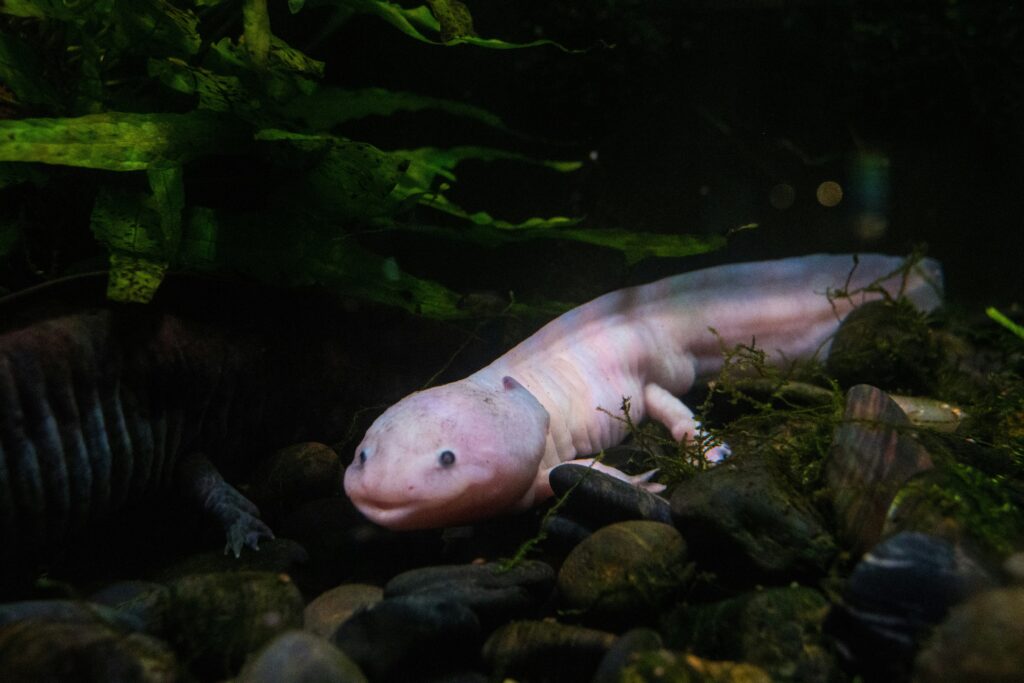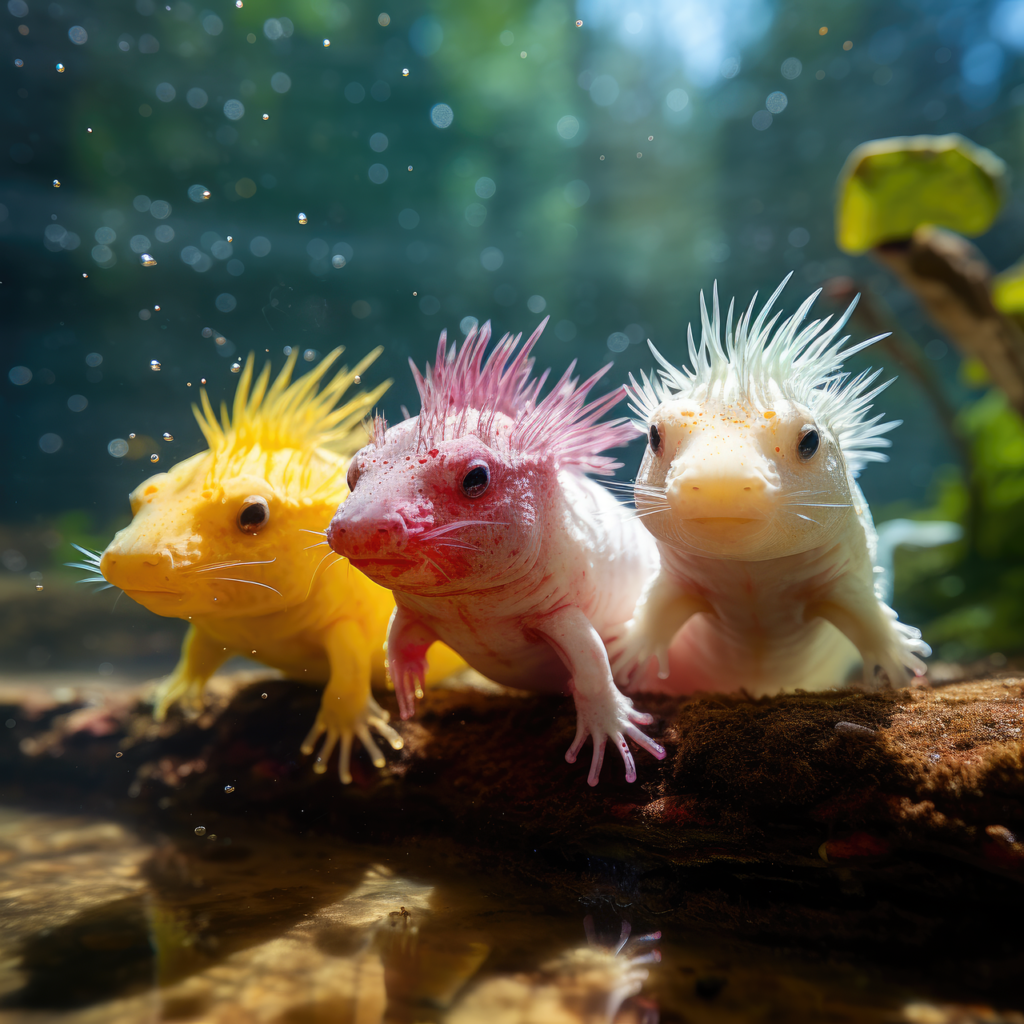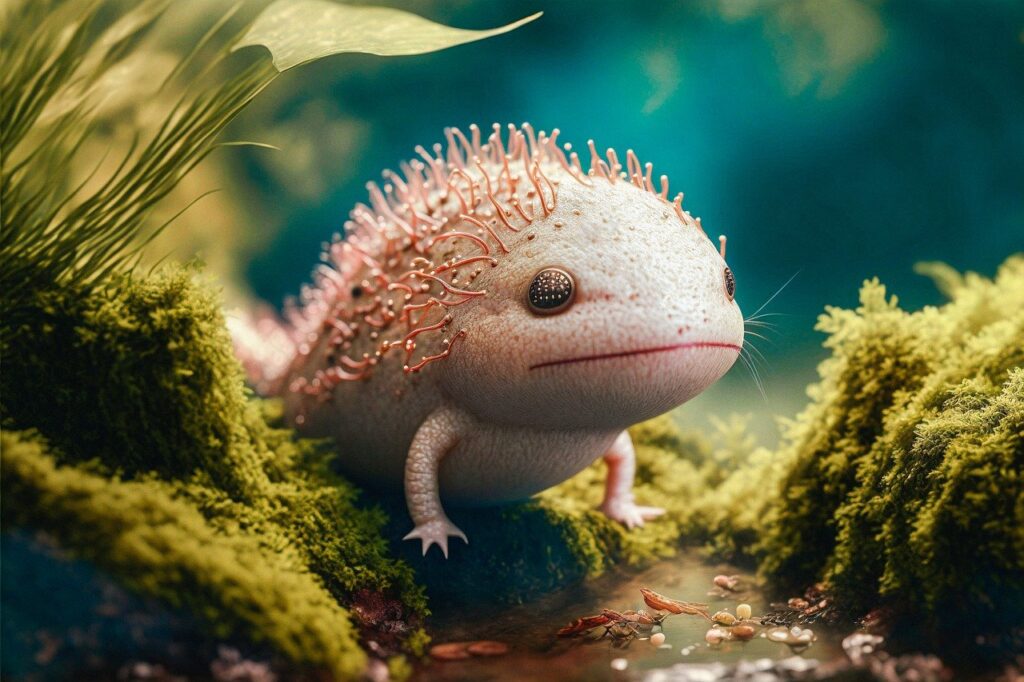Discover the Ultimate Guide to Axolotl Care

Welcome to the ultimate guide to Axolotl care! Whether you’re a seasoned axolotl owner or considering getting one of these fascinating creatures as a pet, this guide is your go-to resource for all things axolotl-related.
In this comprehensive article, we will cover everything you need to know about caring for axolotls, from setting up their habitat to providing the proper nutrition and ensuring their overall well-being. You’ll discover expert tips and practical advice on water parameters, tank setup, feeding habits, and common health issues.
Our aim is to help you create the perfect environment for your axolotl to thrive. With their unique appearance and gentle demeanor, these aquatic creatures have gained popularity as pets. However, they do require specific care to ensure their optimal health.
Whether you’re a first-time axolotl owner or a seasoned pro looking to enhance your knowledge, this guide will equip you with the tools and know-how to provide the best possible care for your axolotl companion. So, let’s dive in and explore the enchanting world of axolotls together!
The Natural Habitat of Axolotls
Axolotls are native to the ancient lake complex of Xochimilco and Chalco in Mexico City. These unique creatures are amphibians that spend their entire lives in water, making them fully aquatic. They are often referred to as “Mexican walking fish” due to their external gills and feathery appearance.
In their natural habitat, axolotls thrive in cool, slow-moving bodies of water with plenty of vegetation and hiding spots. The water is typically shallow, with a soft substrate and a neutral pH level. The temperature ranges from 15 to 20 degrees Celsius, which is important to replicate in their captive environment.
To recreate a suitable habitat for your axolotl, it’s essential to understand their basic needs and provide them with a tank setup that mimics their natural environment.

Understanding the Basic Needs of Axolotls
Axolotls have specific requirements to ensure their well-being and longevity. Let’s explore the basic needs of axolotls:
- Tank Size: Axolotls are relatively large amphibians, and they need ample space to swim and explore. A tank size of at least 20 gallons is recommended for a single axolotl, with an additional 10 gallons for each additional axolotl.
- Water Parameters: Maintaining the right water conditions is crucial for axolotls. The water should be kept clean and filtered, with regular water changes to prevent the buildup of harmful substances. The ideal pH level for axolotls is between 6.5 and 8.0, and the water temperature should be kept between 15 and 20 degrees Celsius.
- Substrate: Axolotls are known to ingest small particles, so it’s important to choose a substrate that is safe for them. Avoid using gravel or small rocks that can be swallowed and cause digestive issues. Instead, opt for a smooth substrate such as sand or large river rocks.
Now that you understand the basic needs of axolotls, let’s move on to setting up the perfect tank for your axolotl companion.
Setting up the Perfect Tank for Your Axolotl
Creating a suitable tank setup is essential to provide a comfortable and stimulating environment for your axolotl. Here are the key elements to consider:
- Tank Size and Shape: As mentioned earlier, axolotls require a spacious tank to accommodate their size. A rectangular tank is preferable, as it provides more swimming space compared to a tall or round tank. The tank should have a secure lid to prevent escape, as axolotls are known to be curious and may attempt to jump out.
- Filtration System: Axolotls produce waste, and a reliable filtration system is necessary to maintain water quality. A canister filter or a sponge filter is recommended, as these types of filters are gentle and won’t create strong water currents that can stress the axolotls.
- Lighting: Axolotls are sensitive to bright lights, so it’s best to provide subdued lighting in their tank. LED lights with adjustable brightness can create a natural day-night cycle and allow you to observe your axolotl without causing stress.
Now that you have set up the perfect tank for your axolotl, let’s move on to the next important aspect of axolotl care: feeding and nutrition.

Feeding and Nutrition for Axolotls
A well-balanced diet is essential for the overall health and growth of axolotls. In the wild, axolotls are opportunistic feeders and consume a variety of small prey, such as worms, insects, and small fish. To replicate their natural diet, you can offer a combination of live, frozen, and commercially prepared foods.
- Live Foods: Axolotls have a keen sense of smell and are attracted to live prey. Feeding them live foods, such as earthworms, bloodworms, and brine shrimp, can stimulate their natural hunting instincts and provide essential nutrients. Live foods should be sourced from reputable suppliers to ensure they are free from parasites and diseases.
- Frozen Foods: Frozen foods are a convenient alternative to live foods and can provide a balanced diet for axolotls. Frozen bloodworms, brine shrimp, and daphnia are readily available and can be thawed before feeding. It’s important to vary the diet and offer a mix of different frozen foods to ensure a wide range of nutrients.
- Commercially Prepared Foods: There are also commercially prepared axolotl pellets and gel foods available in the market. These foods are specifically formulated to meet the nutritional needs of axolotls and can serve as a staple diet. However, it’s important to read the ingredients carefully and choose high-quality brands that provide a balanced mix of proteins, fats, and vitamins.
By providing a varied and balanced diet, you can ensure that your axolotl receives all the essential nutrients for optimal health and growth. Now, let’s move on to maintaining the ideal water conditions for axolotls.
Must Read : Unveiling the Ultimate Guide to Axolotls’ Food
Maintaining the Ideal Water Conditions for Axolotls
Maintaining the right water conditions is crucial for the health and well-being of your axolotl. Here are some key factors to consider:
- Temperature: Axolotls are cold-water amphibians and require a consistent temperature range of 15 to 20 degrees Celsius. Fluctuations in temperature can stress the axolotls and make them more susceptible to diseases. It’s important to use a reliable aquarium heater and a thermometer to monitor and maintain the temperature.
- pH Level: Axolotls are tolerant of a wide pH range, but the ideal pH level for them is between 6.5 and 8.0. Regular water testing is essential to ensure the pH remains within the optimal range. If the pH deviates, it can be adjusted using specific aquarium products designed for pH control.
- Water Quality: Axolotls are sensitive to poor water quality, so regular maintenance is necessary. Perform partial water changes of 20-30% every week to remove accumulated waste and maintain a healthy environment. Use a water conditioner to remove chlorine and chloramine from tap water before adding it to the tank.
By monitoring and maintaining the ideal water conditions, you can provide a healthy and stress-free environment for your axolotl. Now, let’s move on to the next topic: handling and interacting with your axolotl.
Handling and Interacting with Your Axolotl
Axolotls are delicate creatures, and proper handling is important to avoid causing them harm or stress. Here are some guidelines for handling and interacting with your axolotl:
- Wash Your Hands: Before handling your axolotl, make sure to wash your hands thoroughly with soap and water. Avoid using any lotions or creams that may contain chemicals harmful to the axolotl.
- Use a Net: When moving or transferring your axolotl, it’s best to use a soft aquarium net. Gently guide the axolotl into the net and lift it out of the water. Avoid excessive handling or squeezing, as this can injure the axolotl’s delicate skin and organs.
- Avoid Frequent Handling: While axolotls can tolerate brief periods of handling, it’s best to minimize it as much as possible. They are sensitive to stress and can become injured if mishandled. Observe and enjoy your axolotl from outside the tank as much as possible.
Remember, axolotls are primarily aquatic creatures and do not require frequent handling. They are fascinating to observe and can provide hours of entertainment in their natural habitat. Next, let’s discuss common health issues that axolotls may encounter and how to prevent them.
Common Health Issues and How to Prevent Them
Axolotls are generally hardy creatures, but they can be susceptible to certain health issues. By understanding the common problems and taking preventive measures, you can ensure the well-being of your axolotl. Here are some common health issues and how to prevent them:
- Fungal Infections: Fungal infections can occur if the water quality is poor or if the axolotl’s skin is injured. To prevent fungal infections, maintain clean water conditions and avoid sharp objects or rough substrates that can cause injuries. If you notice white patches or fuzzy growth on your axolotl’s skin, consult a veterinarian for appropriate treatment.
- Bacterial Infections: Bacterial infections can occur if the axolotl’s immune system is compromised or if there are wounds or injuries. To prevent bacterial infections, maintain optimal water conditions, provide a balanced diet, and avoid overcrowding in the tank. If you notice redness, swelling, or open sores on your axolotl, seek veterinary care immediately.
- Metabolic Bone Disease: Metabolic bone disease can occur if the axolotl’s diet lacks essential nutrients, especially calcium. To prevent metabolic bone disease, provide a varied diet that includes calcium-rich foods such as calcium-dusted insects or specialized axolotl calcium supplements. Regular water testing and maintenance are also important to ensure proper mineral balance.
By being proactive in preventing common health issues, you can help your axolotl live a long and healthy life. Now, let’s move on to the topic of breeding and reproduction of axolotls.

Breeding and Reproduction of Axolotls
Breeding axolotls can be a rewarding and fascinating experience. However, it requires careful planning and preparation. Here are some key points to consider when breeding axolotls:
- Sexing Axolotls: Determining the sex of axolotls can be challenging, as they do not have external differences. However, males tend to have a more slender body, a longer tail, and a swollen cloaca during the breeding season. Females, on the other hand, may have a rounder body shape and a wider cloaca.
- Providing Breeding Conditions: To induce breeding, axolotls require specific conditions, including a drop in temperature and an increase in food availability. Lowering the temperature to around 10 degrees Celsius and gradually increasing the feeding can simulate the natural breeding season.
- Egg and Larval Care: Once the female axolotl lays eggs, they need to be carefully monitored and protected. The eggs are delicate and can easily be damaged by water currents or predators. It’s important to provide a separate breeding tank with gentle filtration and maintain optimal water conditions for the eggs to develop.
Breeding axolotls can be a complex process, and it’s recommended to seek guidance from experienced breeders or join axolotl enthusiast communities for support. Finally, let’s conclude this ultimate guide to axolotl care.
Conclusion: Becoming a Responsible Axolotl Owner
Congratulations! You have now gained a comprehensive understanding of axolotl care. From setting up the perfect tank to providing the right nutrition and maintaining optimal water conditions, you are well-equipped to become a responsible axolotl owner.
Remember, axolotls are unique creatures that require specific care and attention. By providing them with a suitable environment, a balanced diet, and regular monitoring, you can ensure their well-being and enjoy their fascinating presence in your life.
Whether you’re a first-time axolotl owner or a seasoned pro, continuous learning and staying up-to-date with the latest research and best practices is essential. Join online forums, connect with other axolotl enthusiasts, and seek advice from reputable sources to enhance your knowledge and provide the best care for your axolotl companion.
Now, it’s time to embark on this exciting journey and create a thriving and enchanting world for your axolotl. Enjoy the wonders of axolotl ownership and the endless joy they bring to your life.
What do you think?
Show comments / Leave a comment